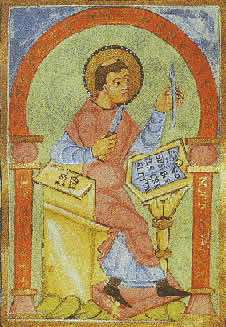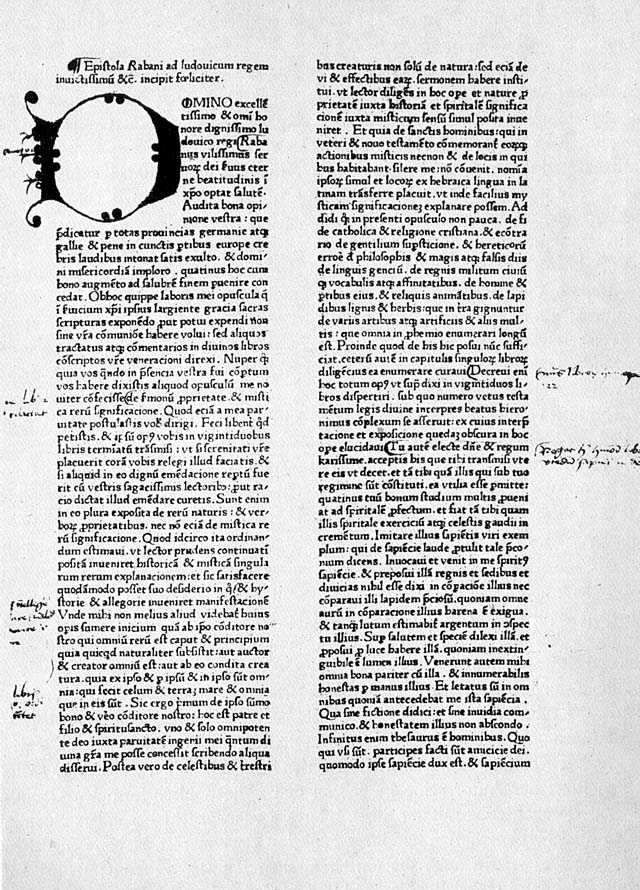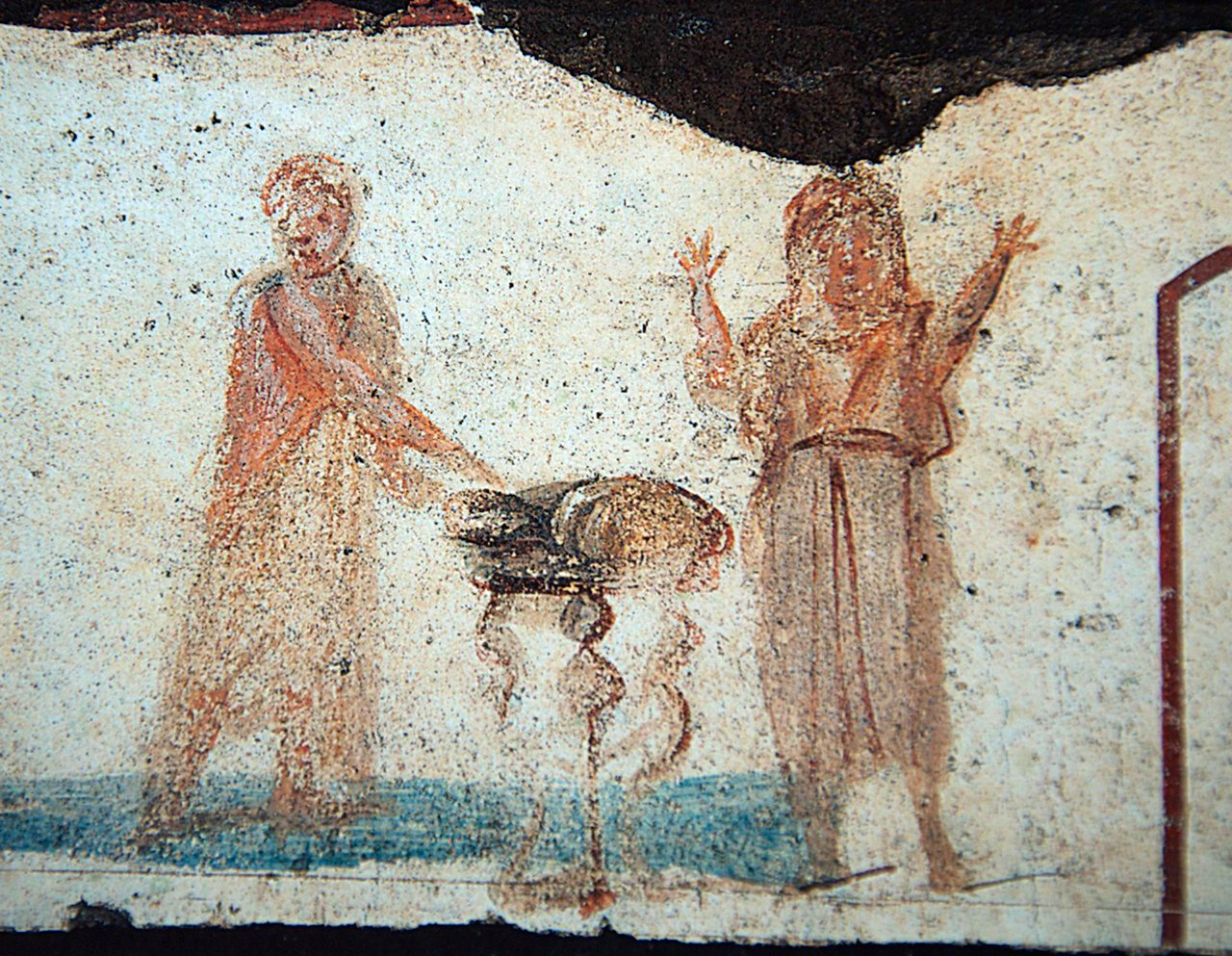|
Martyrologium Hieronymianum
The ''Martyrologium Hieronymianum'' (meaning "martyrology of Jerome") or ''Martyrologium sancti Hieronymi'' (meaning "martyrology of Saint Jerome") is an ancient martyrology or list of Christian martyrs in calendar order, one of the most used and influential of the Middle Ages. It is the oldest surviving general or "universal" martyrology, and the precursor of all later Western martyrologies. Pseudo-Jerome, Pseudepigraphically attributed to Saint Jerome, the ''Martyrologium Hieronymianum'' contains a reference to him derived from the opening chapter of his ''Life of Malchus'' (392 AD) where Jerome states his intention to write a history of the saints and martyrs from the apostolic times: "I decided to write [a history, mentioned earlier] from the coming of the saviour up to our age, that is, from the apostles, up to the dregs of our time". Date and textual history The ''Martyrologium Hieronymianum'' appears to have drawn for its material on the existing calendar of Rome, on o ... [...More Info...] [...Related Items...] OR: [Wikipedia] [Google] [Baidu] |
Henri Quentin
Dom Henri Quentin (7 October 1872, Saint-Thierry - 4 February 1935, Rome) was a French Benedictine abbot. A philologist specializing in biblical texts and martyrologies, he was the creator of an original method of textual criticism (sometimes called the neo-Lachmannian method). He pioneered techniques to compare texts and produce trees of relationships between version and editions in order to study their origins and variations. Life After studying theology at the seminary of Rheims, he joined in 1892 Maredsous Abbey and in 1897 Solesmes Abbey. He was ordained priest in 1902. In 1907, he was called to Rome to direct the work of the Pontifical Commission for the Revision of the Vulgate, newly created by Pope Pius X and entrusted to the Order of St Benedict. It was during this time that he was faced with a wide range of versions of texts with differences. This forced him to explore the editions systematically using quantitative approaches. In March 1914, he was appointed con ... [...More Info...] [...Related Items...] OR: [Wikipedia] [Google] [Baidu] |
Notker Balbulus
Notker the Stammerer ( – 6 April 912), Notker Balbulus, or simply Notker, was a Benedictine monk at the Abbey of Saint Gall active as a composer, poet and scholar. Described as "a significant figure in the Western Church", Notker made substantial contributions to both the music and literature of his time. He is usually credited with two major works of the Carolingian period: the '' Liber Hymnorum'', which includes an important collection of early musical sequences, and an early biography of Charlemagne, the '' Gesta Karoli Magni''. His other works include a biography of Saint Gall known as the ''Vita Sancti Galli'' and a martyrology, among others. Born near the Abbey of Saint Gall, Notker was educated alongside the monks Tuotilo and Ratpert; all three were composers, making the Abbey an important center of early medieval music. Notker quickly became a central figure of the Abbey and among the leading literary scholars of the Early Middle Ages. A renowned teacher, he taught ... [...More Info...] [...Related Items...] OR: [Wikipedia] [Google] [Baidu] |
Rabanus Maurus
Rabanus Maurus Magnentius ( 780 – 4 February 856), also known as Hrabanus or Rhabanus, was a Frankish Benedictine monk, theologian, poet, encyclopedist and military writer who became archbishop of Mainz in East Francia. He was the author of the encyclopaedia ''De rerum naturis'' (''"On the Natures of Things"''). He also wrote treatises on education and grammar and commentaries on the Bible. He was one of the most prominent teachers and writers of the Carolingian age, and was called "Praeceptor Germaniae", or "the teacher of Germany". In the most recent edition of the Roman Martyrology ('' Martyrologium Romanum'', 2004, pp. 133), his feast is given as 4 February and he is qualified as a Saint ('sanctus'). Life Rabanus was born of noble parents in Mainz. The date of his birth remains uncertain, but in 801 he was ordained a deacon at Benedictine Abbey of Fulda in Hesse, where he had been sent to school and had become a monk. At the insistence of Ratgar, his abbot, he wen ... [...More Info...] [...Related Items...] OR: [Wikipedia] [Google] [Baidu] |
Ado Of Vienne
Ado (died 16 December 874) was a Frankish churchman and writer. He served as the archbishop of Vienne from 850 until his death and is venerated as a saint. His writings include hagiography and historiography. Life Ado belonged to a prominent noble family. He was sent while still a child for his education, first to Sigulf, abbot of Ferrières, and then to Marcward, abbot of Prüm. After the death of Marcward in 853, Ado went to Rome where he stayed for nearly five years, and then to Ravenna, after which Remy, archbishop of Lyon, gave him the parish of Saint-Romain near Vienne. The following year he was elected archbishop of Vienne and dedicated in August or September 860, despite opposition from Girard, Count of Paris, and his wife Bertha. Ado participated in the Council of Tousy, near Toul in Lorraine, on 22 October 860, and held a in 870. After his death on 16 December 876, his body was buried in the Church of the Apostles in Vienne, now called St. Peter's Church, the usua ... [...More Info...] [...Related Items...] OR: [Wikipedia] [Google] [Baidu] |
Florus Of Lyon
Florus of Lyon (), a deacon in Lyon, was an ecclesiastical writer in the first half of the ninth century. A theologian, canonist, liturgist, and poet, he ran the scriptorium at Lyons. He was considered one of the foremost authorities on theological questions among the clergy of the Frankish kingdom. He died about 860.''History of the Christian Church'', Volume IV: Mediaeval Christianity. A.D. 590-1073, (Philip Schaff, ed.) 1910, Charles Scribner’s Sons Life There is no information regarding the place of birth, the parents, or the youth of this distinguished theologian; but it is probable that he came from the neighbourhood of Lyons. He is mentioned in a letter by the Benedictine monk[...More Info...] [...Related Items...] OR: [Wikipedia] [Google] [Baidu] |
Martyrology Of Usuard
The ''Martyrology of Usuard'' is a work by Usuard, a monk of the Benedictine abbey of Saint-Germain-des-Prés.Thurston, Herbert. "Martyrology of Usuard." The Catholic Encyclopedia Vol. 15. New York: Robert Appleton Company, 1912. 12 March 2021 The prologue is dedicated to Charles the Bald indicating that it was undertaken at that monarch's instigation. It was apparently written shortly before the author's death in 875.Bonniwell O.P., W.R., "Introduction", ''The Martyrology of the Sacred Order of Friars Preachers'', The ... [...More Info...] [...Related Items...] OR: [Wikipedia] [Google] [Baidu] |
Bede
Bede (; ; 672/326 May 735), also known as Saint Bede, Bede of Jarrow, the Venerable Bede, and Bede the Venerable (), was an English monk, author and scholar. He was one of the most known writers during the Early Middle Ages, and his most famous work, '' Ecclesiastical History of the English People'', gained him the title "The Father of English History". He served at the monastery of St Peter and its companion monastery of St Paul in the Kingdom of Northumbria of the Angles. Born on lands belonging to the twin monastery of Monkwearmouth–Jarrow in present-day Tyne and Wear, England, Bede was sent to Monkwearmouth at the age of seven and later joined Abbot Ceolfrith at Jarrow. Both of them survived a plague that struck in 686 and killed the majority of the population there. While Bede spent most of his life in the monastery, he travelled to several abbeys and monasteries across the British Isles, even visiting the archbishop of York and King Ceolwulf of Northumbria. ... [...More Info...] [...Related Items...] OR: [Wikipedia] [Google] [Baidu] |
Carolingian
The Carolingian dynasty ( ; known variously as the Carlovingians, Carolingus, Carolings, Karolinger or Karlings) was a Frankish noble family named after Charles Martel and his grandson Charlemagne, descendants of the Arnulfing and Pippinid clans of the 7th century AD. The dynasty consolidated its power in the 8th century, eventually making the offices of mayor of the palace and '' dux et princeps Francorum'' hereditary, and becoming the ''de facto'' rulers of the Franks as the real powers behind the Merovingian throne. In 751 the Merovingian dynasty which had ruled the Franks was overthrown with the consent of the Papacy and the aristocracy, and Pepin the Short, son of Martel, was crowned King of the Franks. The Carolingian dynasty reached its peak in 800 with the crowning of Charlemagne as the first Emperor of the Romans in the West in over three centuries. Nearly every monarch of France from Charlemagne's son Louis the Pious until the penultimate monarch of France Louis ... [...More Info...] [...Related Items...] OR: [Wikipedia] [Google] [Baidu] |
Pope Miltiades
Pope Miltiades (, ''Miltiádēs''), also known as Melchiades the African ( ''Melkhiádēs ho Aphrikanós''), was the bishop of Rome from 311 to his death on 10 or 11 January 314. It was during his pontificate that Emperor Constantine the Great issued the Edict of Milan (313), giving Christianity legal status within the Roman Empire. The pope also received the palace of Empress Fausta where the Lateran Palace, the papal seat and residence of the papal administration, would be built. At the Lateran Council, during the schism with the Church of Carthage, Miltiades condemned the rebaptism of apostatised bishops and priests, a teaching of Donatus Magnus. Background The year of Miltiades' birth is unknown. Still, it is known that he was of North African descent and, according to the ''Liber Pontificalis'', compiled from the 5th century onwards, a Roman citizen. Miltiades and his successor, Sylvester I, were part of the clergy of Pope Marcellinus. It has been suggested that he wa ... [...More Info...] [...Related Items...] OR: [Wikipedia] [Google] [Baidu] |
Appian Way
The Appian Way (Latin and Italian language, Italian: Via Appia) is one of the earliest and strategically most important Roman roads of the ancient Roman Republic, republic. It connected Rome to Brindisi, in southeast Italy. Its importance is indicated by its common name, recorded by Statius, of ('the Appian Way, the queen of the long roads'). The road is named after Appius Claudius Caecus, the Roman censor who, during the Samnite Wars, began and completed the first section as a military road to the south in 312 BC."Appian Way" in ''Chambers's Encyclopædia''. London: George Newnes Ltd, George Newnes, 1961, Vol. 1, p. 490. In July 2024, the Appian Way entered the UNESCO World Heritage List. Origins Development The Appian Way was a Roman roads, Roman road that the Roman Republic, Republic used as a main route for military supplies for its conquest of southern Italy in 312 BC and for improvements in communication. The Appian Way — essential to the Romans — wa ... [...More Info...] [...Related Items...] OR: [Wikipedia] [Google] [Baidu] |
Catacombs Of Rome
The Catacombs of Rome () are ancient catacombs, underground burial places in and around Rome, of which there are at least forty, some rediscovered since 1578, others even as late as the 1950s. There are more than fifty catacombs in the underground of Rome in which about 150 km of tunnels run. Though most famous for Christian burials, either in separate catacombs or mixed together, Jews and also adherents of a variety of pagan Roman religions were buried in catacombs, beginning in the 2nd century AD,Toynbee: 39–40. occasioned by the ancient Roman ban on burials within a city, and also as a response to overcrowding and shortage of land. The most extensive and perhaps the best known is the Christian Catacomb of Callixtus located near the Park of the Caffarella, but there are other sites, both Christian and not, scattered around the city, some of which are now engulfed by modern urban sprawl. The Christian catacombs are extremely important for the history of Early Christian ... [...More Info...] [...Related Items...] OR: [Wikipedia] [Google] [Baidu] |





